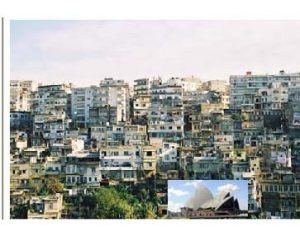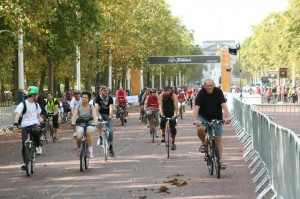Following our discussion of Design Theory, Christine Storry has prepared these interesting collages of a building in different landscape contexts. She asks: ‘What do they illustrate? That there is a symbiotic relationship between a locale and architecture. Even great architecture. Architects might draw buildings on white or yellow paper or in model or paper space but buildings are built on a site and in a location with all that that means!’

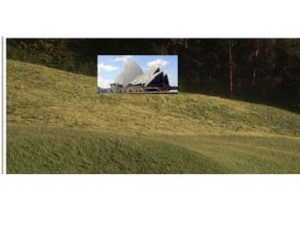
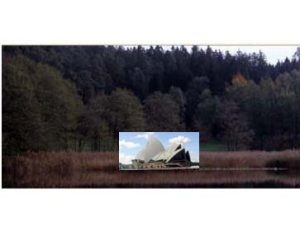
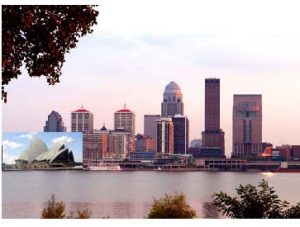
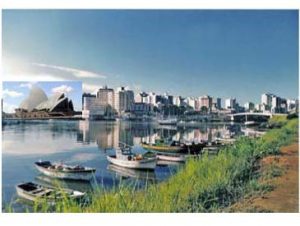
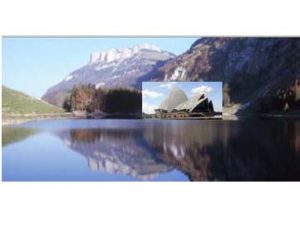
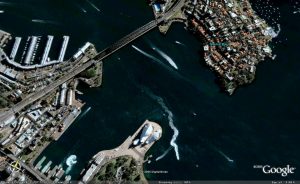
Author Archives: Tom Turner
Design theory in architecture and landscape
An email arrived today with the comment that ‘My primary interest is in design excellence (aesthetics) & I have been writing about how architecture is an art, and unlike other fine arts it is a practical art: a public art.’ But that ‘… because of the demands of sustainability there needs to be a way of re-thinking how we do architecture, privileging design. Central to this idea is that architecture is functional (modernist programme), sceniographic (post-modernist) and meaningful (post-postmodernist agenda)!?’
I agree that architecture and landscape architecture are applied arts. But in this, they do not differ from garment design, furniture design, etc. All should be functional and are best when they have high aesthetic quality. Sustainability considerations apply to each of these arts: if the world is running out of resources then we need to be more economical. This is, amongst other things, an argument for using lime mortar instead of cement mortar. Lime bonded brickwork and stonework can be disassembled, allowing design changes the the reuse of materials.
The public aspect of some applied arts raises other issues. The furniture in my home would seem to be entirely my own concern. But if I want to build a tall modern building in a medieval village then this becomes a matter of legitimate public concern. Ditto for the Martha Schwarz post-modern amhphitheatre in Castleford, especially because a bunch of idiots dipped their hands into the public purse to fund the park.
‘Meaning’ is another issue. A modernist approach to the Castleford Park would have been to discover what people wanted for the space and then make provision for their activities. The postmodern approach, as used by Schwarz, was to give the space a ‘meaning’. I do not know what words she used – could it have been to ‘echo a Roman approach to open space design, as exemplified by the Colisseum’ – but they must have been something inappropriate. A post-Postmodern approach to the Castleford park would have involved recognition of the multifarious interests of local people combined with intelligent design leadership. Beliefs shared between the public and the designer would have facilitated their combination. Flying in a US Design Queen might have worked in the context of shared beliefs.
London's Olympic cycling routes
Doubtless, the 2012 athletes will be provided with excellent tracks. But will the cycle paths used to reach the Olympic path be of a decent standard? Maybe.
London had a ‘Cycle to Work Week’ c1974 and I decided to take part. Since then, I have been a regular London cyclist. It felt like pioneering to begin with but cycle usage in the capital has been increasing steadily. Official policy on cycling has also changed and now appears to be as follows:
- Appoint platoons of cycle planning officers to commission regiments of consultants on cycle planning.
- Include cyclist-friendly policies in local plans (UDPs)
- Proliferate signs to mark the London Cycle Network (LCN)
- Paint any unwanted patches of roadspace green and call them cycle routes
- Ignore routes which are popular with cyclists
- Spend as little money as possible on cycle routes
- Use traffic calming devices, known as chicanes, to kill and maim as many cyclists as possible.
- Introduce bendy busses, described as ‘public transport’, to mop up survirors and make London safe, once again, for vehicles powered by the infernal combustion engine.
So, on the whole, I am lack optimism about the legacy of the London Olympics including a single high-quality cycle route. There are only two reasons for optimism: London’s Mayor (Boris Johnson) and the present leader of the Tory Party (David Cameron) are both keen cyclists. But so was a former Minister of Transport (Sir George Younger) and he managed to achieve nothing of value.
In order to make cycle routes useful and beautiful, cycle route planning and design should be taken out of the hands of transport engineers. The job should be done by landscape architects – but only those who are themselves cyclists.
The Olympic landscape architecture of firework displays
With the hatred of competitive sport one learns best in a boys school, the only parts of the 2008 Olympics I watched on TV were the opening fireworks and the closing ceremony. China’s ancient prowess in fineworks and landscape painting were much in evidence.
My home town, Edinburgh, ushers in each new year with brilliant use of its castle as a stage and Princess Street as the front stalls (photo Jenni Douglas). Beijing had fireworks running around the Bird’s Nest and dashing into the city (photo Kathy Zhuang). London had a great display on The Mall in 2002 to celebrate the Queen’s Golden Jubilee. In 2012, it should have a display which bursts out of the Olympic Park, tears up Thames and visits each of the Royal Parks. Such a show, would be a small thank-you to all those unfortunate Londoners, like me, who are forced to contribute hard-earned cash to an otherwise hateful sporting event. Obviously, landscape architects must be involved in planning the landscape fireworkitecture.
See notes on London’s 2012 Olympic Park Development Project.
Roofscapes as citywide landscape architecture
The Dirt (ASLA) blog has a post on “living buildings”. It reviews the idea that in future a building ‘won’t just use less water; it will collect and treat it. It won’t just force air; it will filter it’. This reminds me of the excellent example ASLA set the world by putting a green roof on its own office building – and suggests a possible future for the profession. ‘Landscape architecture’ is, I believe, one of the world’s most important professions, but the general public has never come to terms with its name. We could and should give it a new slant by taking the lead in ‘the landscaping of architecture’. As the photo of the ASLA building shows, a focus on the landscape treatment of individual buildings in not enough. We should develop citywide landscape strategies for buildings with useful exterior surfaces. They can be used for recreation, carbon sequestration, food production, rainwater harvesting and much else. The diagram from a 1996 City as landscape essay on Eco-cities, suggests a citywide approach to the landscape treatment of roofscapes – and has a slight visual kinship with Michael Van Valkenburgh Associate’s design for the ASLA green roof.
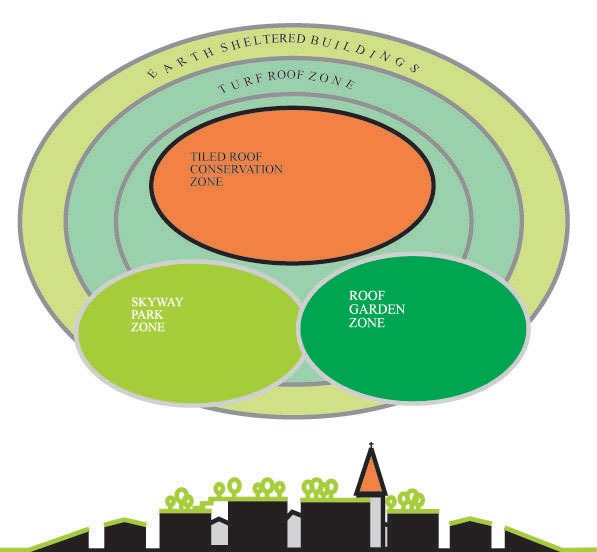
Garden graduates from the University of Greenwich
We congratulate Toby Buckland on his new role as presenter of BBC Gardener’s World and Sarah Eberle on receiving a Doctorate in Design from the University of Greenwich. Sarah was the second University of Greenwich graduate, after Bunny Guinness, to receive a doctorate in garden design. They confirm our view that education in garden design and landscape architecture can lay the foundations for exciting, rewarding and glamorous careers.
The Garden Rant blog, which I like, questions whether the BBC should have appointed a woman instead of a man to the post. It is a very fair question but not one to be decided on the sex of the presenter. What matters is who will attract the most viewers. Gertrude Jekyll is popular because of the quality of her work: nothing else. I lay claim to the distinction of being a third generation feminist, because my grandfather was a keen supporter of the suffragette movement, but all he, my mother and I ever wanted was equality.

